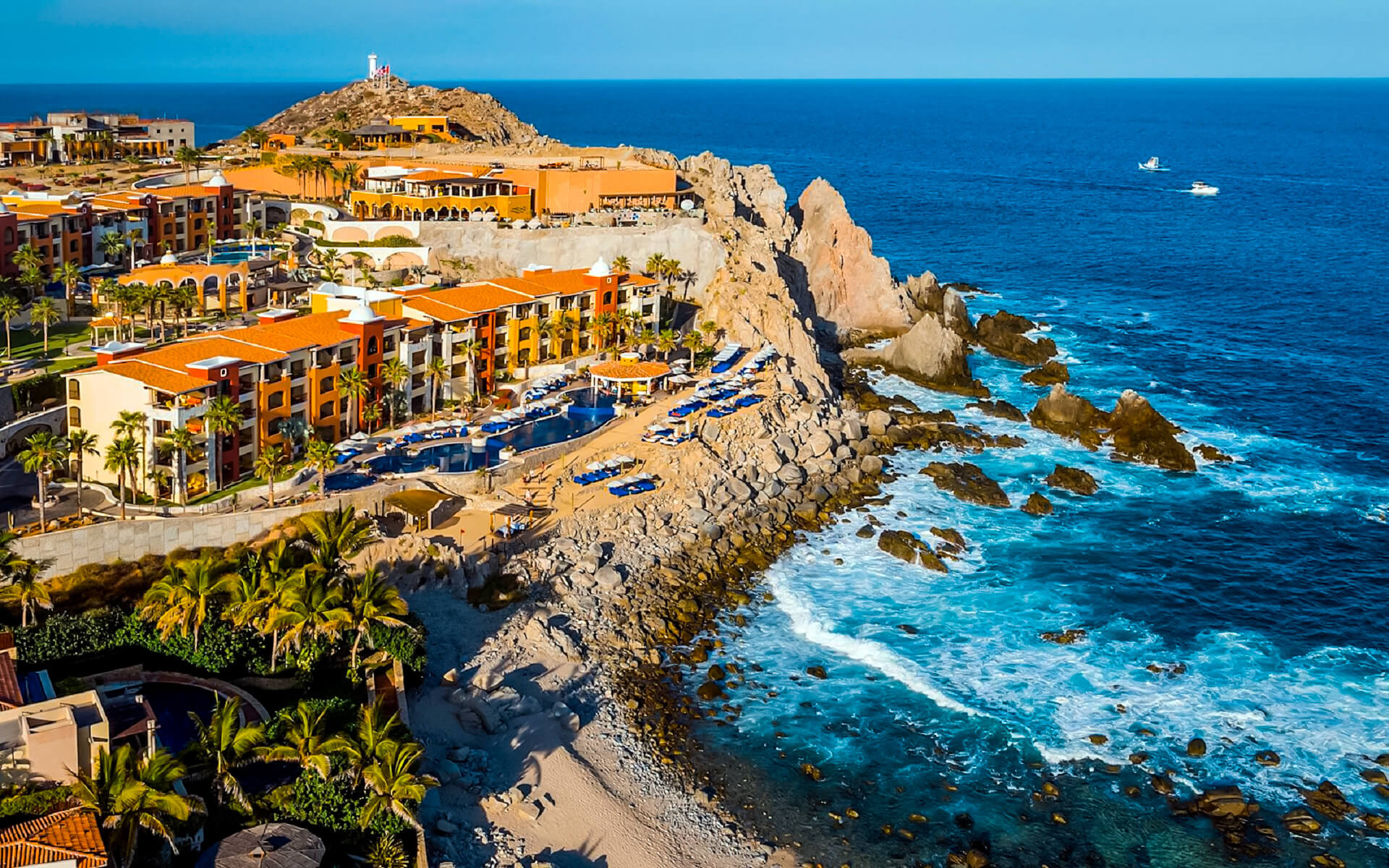Cabo San Lucas has developed into a popular holiday and spa destination, with several attractions and timeshares erected along the coast between San Lucas and San José del Cabo. The unique Arco de Cabo San Lucas is a well-known landmark in the area.
Cabo San Lucas hosts the world’s highest-paying marlin tournament, the “Bisbee’s Los Cabos Offshore.” This competition is held annually in October.
During the winter, whale pods may be seen in the vicinity. After completing their 6000-mile voyage from Alaska and Siberia, they give birth in the warm waters of the Gulf of California.
Development
Cabo San Lucas’ beaches, surfing, and sport fishing prospects have drawn a considerable number of Mexicans and tourists to spend their holidays in the area’s large-scale tourism complexes. The growth of Cabo’s tourist business was sparked in 1974 by the Mexican government’s creation of infrastructure to transform Cabo San Lucas into a major tourism destination in Mexico. After the Transpeninsular Highway, commonly known as the Mexican Federal Highway 1, was completed, tourism growth in Los Cabos went virtually unabated.
Until very recently, this section of Mexico’s distinctive and endangered ecology was entirely shielded by law, leaving it vulnerable to developers working in collaboration with government agencies interested solely in low-end tourist bonanzas. However, an increasing number of activists and lawyers are now working to protect many of Baja’s desert environments, marine creatures, and sections of coastline. Numerous organizations, notably the Gulf of California Conservation Fund and the La Paz-based Center for Environmental Law, are opposing the loss of wetlands and other habitats between Los Cabos and Ensenada. Faced with an increasing international public demand for corporate-led ecological stewardship, higher-end resorts in the Los Cabos area are becoming more conscious of their environmental impact and taking initial steps to implement sustainable practices such as water conservation and non-recyclable waste reduction. Los Cabos is expected to be one of Latin America’s top tourism destinations in 2017, owing in large part to enhanced accessibility through new airline connections from the United States and Canada. Cabo is anticipated to add 4,000 more sleeping rooms by 2018, and the boost in tourism will help to the city’s expansion as a leisure leader.
Transportation
Los Cabos International Airport serves Cabo San Lucas and San José del Cabo.
Additionally, the town is a major port of call for several cruise ships. Cabo San Lucas has a modest international airport that supports general aviation and air taxi traffic.
Numerous visitors navigate the region through the numerous local taxis that serve the main areas of Cabo, as well as the Corridor and airport. Alternatively, there is a network of tiny buses that are used by residents but are also accessible to visitors, and only a few pesos, making them far less costly than taxis.
Nightlife and recreational activities
Cabo Wabo Cantina is a nightclub owned by rock artist Sammy Hagar. It was created by him and fellow Van Halen members and is named after their famous tune Cabo Wabo. Additionally, there is the Baja Brewing Company (which was also Baja California’s first microbrewery), La Vaquita, Mandala, Coco Bongo, El Squid Roe, Giggling Marlin, Nowhere Bar, Tiki Bar, Usual Suspects, and Jungle Bar. Edith’s, Hacienda Cocina y Cantina, and Sunset da Mona Lisa are among the restaurants in downtown Cabo. Additionally, tourists may ride horses in the desert, lease a boat for fishing, snorkeling, and beach parasailing. The biweekly “Gringo Gazette,” Cabo San Lucas’ English-language newspaper, covers tourist activities in Cabo San Lucas, San Jose, Todos Santos, La Paz, and the East Cape Baja.
Consumption in Cabo San Lucas
Cabo San Lucas is known for its fish, but restaurants serving European and North American cuisine also draw visitors. While dining is often pricey, you may discover cheaper food and more engaging cultural experiences if you visit any of the downtown or hotel corridor’s hole-in-the-wall taco shops (taquerias).
Cabo San Lucas and San José del Cabo have attracted an increasing number of recognized chefs (and their inventive menus) to Mexico over the years as the region has grown in popularity. Suviche Restaurant by Jean-Georges Vongerichten, situated inside the One&Only Palmilla Resort, serves sushi and ceviche; Flora’s Field Kitchen serves farm-to-table cooking; and Tadd Chapman’s Don Sanchez serves classic Mexican fare with a creative touch. Consider El Farallon at the Resort at Pedregal for a special occasion lunch due to its seaside location. If you’re looking for a more relaxed but nonetheless delicious traditional Mexican supper, try one of Cabo’s smaller hotspots, such as Edith’s, Mi Casa, Tiki Cabo San Lucas, or Hacienda Cocina y Cantina.
Corridor of resorts
Medano is Cabo San Lucas’s major beach, as seen here with Land’s End in the distance.
The corridor is lined with hotels and tourist attractions of all types. The Waldorf Astoria (previously known as The Resort at Pedregal), Las Ventanas al Paraiso, and Esperanza are among the corridor’s high-end properties.
Medano Beach, situated in Chileno Bay, is one of the Corridor’s most popular beaches. Tropical fish, sea turtles, invertebrates, and sponges call it home. Snorkelers often visit Chileno Bay to study the aquatic life under the surface.


